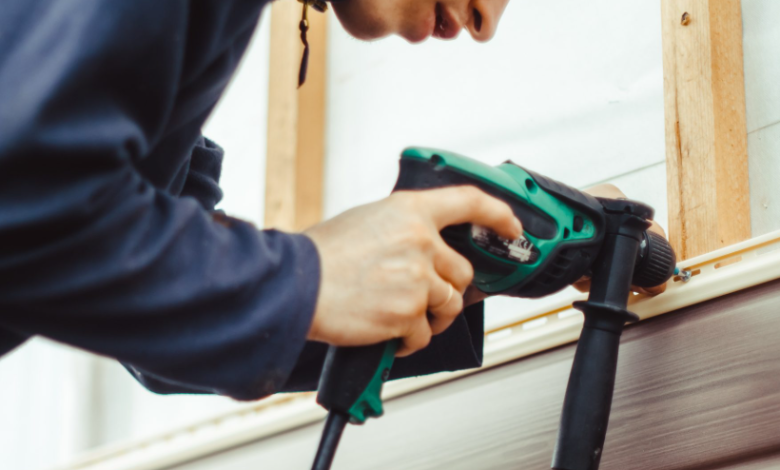Avoid These Common Siding Installation Mistakes

Introduction:
Siding not only protects your home from the elements but also defines its exterior aesthetic. A properly installed siding system improves insulation, increases curb appeal, and can significantly boost home value. However, many homeowners in Kansas City encounter issues due to improper installation. These common siding mistakes can lead to expensive repairs, water damage, and decreased energy efficiency. Whether you are hiring a contractor or considering a DIY approach, it’s essential to understand and avoid the most frequent siding installation pitfalls.
The Importance of Proper Kansas City Siding Installation
Extreme Weather Demands Extra Care
Kansas City’s unique climate — with humid summers, icy winters, and frequent storms — places high demands on home siding. A minor mistake in installation can quickly become a major issue when moisture or wind infiltrates your exterior.
Local Codes and Material Requirements
Using incorrect siding materials or ignoring local building codes in Kansas City can result in violations or premature siding failure. Understanding region-specific guidelines ensures that your siding stands the test of time.
See also: Achieving Optimal Oral Aesthetics Through Cutting-Edge Dental Implant Techniques
Most Common Siding Installation Mistakes to Avoid
Ignoring Manufacturer Guidelines
Every siding product comes with a manufacturer’s recommended installation method. Ignoring these instructions can void warranties and compromise performance. In Kansas City siding projects, skipping steps like proper spacing or nailing patterns leads to cracking, buckling, and water leaks.
Improper Flashing and Waterproofing
One of the most critical steps in siding installation is ensuring moisture cannot penetrate behind the panels. Improper flashing around windows, doors, and corners can cause hidden mold growth and wood rot — especially in humid Kansas City summers.
Avoid this by:
- Installing flashing tape around all openings.
- Using house wrap and moisture barriers correctly.
- Overlapping seams in the correct direction to guide water away.
Incorrect Nailing Technique
Nailing too tightly or too loosely can cause siding to warp or detach. Vinyl siding, in particular, expands and contracts with temperature changes. Overdriven nails don’t allow this movement, leading to cracks during Kansas City’s seasonal shifts.
Tips:
- Use corrosion-resistant nails.
- Leave a small gap between the nail head and the siding.
- Nail into studs, not just sheathing, for stability.
Uneven or Unlevel Installation
Starting with a crooked starter strip means every row of siding will be off. This not only looks unprofessional but also makes panels vulnerable to wind and moisture. In Kansas City, where storms are common, secure and level installation is essential.
Solution:
- Use a chalk line to ensure level starts.
- Double-check measurements before nailing each panel.
Overlooking Ventilation and Insulation
Poor Wall Ventilation
Proper ventilation behind siding panels is crucial, especially for homes in Kansas City with high humidity. Without airflow, moisture gets trapped behind the siding and causes long-term damage.
Best Practices:
- Install furring strips to create an air gap.
- Choose breathable underlayment to allow moisture escape.
Neglecting Insulation Opportunities
Siding replacement is the ideal time to upgrade insulation. Skipping this step can lead to higher energy bills in both Kansas City’s freezing winters and sweltering summers.
How to Improve:
- Add rigid foam insulation before installing new siding.
- Seal all gaps and cracks in the sheathing.
Choosing the Wrong Siding Contractor
Lack of Experience with Kansas City Siding
Not every contractor understands the specific challenges of Kansas City homes. Hiring someone without local experience can result in poor material choices or cutting corners that don’t hold up in the region’s climate.
What to Look For:
- Contractors familiar with Kansas City weather patterns.
- Proven experience with siding in the local area.
- References or reviews from Kansas City homeowners.
Skipping a Detailed Contract
Homeowners often make the mistake of accepting vague verbal estimates. Without a clear contract, timelines can stretch, costs may rise, and the quality of work might not meet expectations.
What to Include in a Contract:
- Scope of work.
- Types and brands of materials.
- Estimated completion time.
- Warranty details and post-installation support.
Failing to Account for Expansion and Contraction
No Room for Movement
Many materials, including vinyl and fiber cement, expand and contract with temperature fluctuations. Kansas City’s weather makes this issue even more prominent. Tight-fitting siding can crack or buckle over time.
Preventative Steps:
- Leave recommended expansion gaps between panels.
- Use trim pieces to cover expansion zones.
Forgetting About Maintenance After Installation
Improper Cleaning Methods
Siding is low-maintenance, not no-maintenance. Power washing too aggressively can damage panels or force water behind them. In Kansas City, where dirt and pollen build up during spring, gentle cleaning is best.
Maintenance Tips:
- Clean with a soft brush and mild detergent annually.
- Inspect for cracks, loose nails, and moisture signs every season.
Ignoring Small Repairs
What starts as a small crack or loose panel can turn into serious damage if ignored. In Kansas City’s windy and rainy seasons, even minor issues can escalate quickly.
Fix Early:
- Seal minor gaps with appropriate caulk.
- Replace cracked or broken panels before moisture spreads.
Final Thoughts
Siding is a vital part of your home’s defense against the elements and an opportunity to increase both energy efficiency and curb appeal. Avoiding these common siding installation mistakes ensures your investment lasts for decades. Whether you’re considering vinyl, fiber cement, or another material, make sure your Kansas City siding project is done right — the first time.





